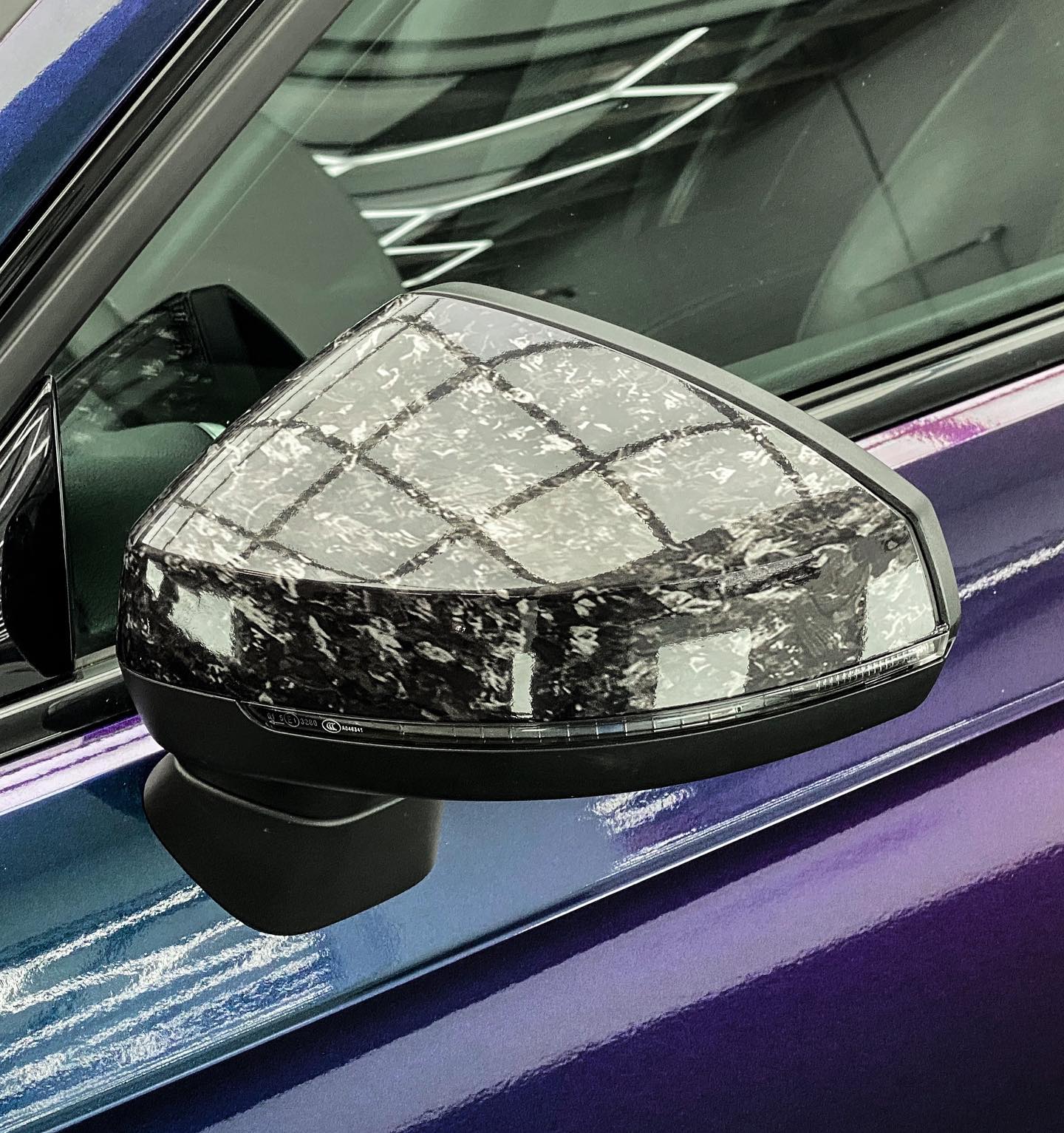
When comparing real carbon fiber parts and a carbon fiber wrap, the cost is one of the distinctions. How Does Carbon Fiber Wrap Compare to Real Carbon Fiber? Regardless, high-quality carbon fiber vinyl wrap may fool a casual observer, and in some cases, even a connoisseur. While vinyl wraps do come close to the real deal's aesthetics, some people claim that it doesn't have the depth of carbon fiber. The high-quality vinyl wrap looks similar to carbon fiber, as does high-gloss or epoxy gloss finishes. Wraps come in a variety of weave patterns and finishes that mimic real carbon fiber. The newest generation of carbon fiber wrap looks pretty realistic. RELATED: What is Forged Carbon Fiber? The Ultimate Guide To Forged Composites Does Carbon Fiber Wrap Look Real? On the other hand, carbon fiber sheet or laminate is a genuine carbon fiber. Essentially, it's a vinyl sticker with a printed carbon fiber pattern. And some even claim it's just like the real thing but for a fraction of the price. There are a few companies that tend to be vague about what they're producing. The better material allows you to apply heat and conform it around shapes, curves, and corners. In short, you can use carbon fiber wrap on virtually anything the adhesive sticks to. Some of the most popular uses are automotive, from spoilers and hoods to car interiors.


Besides, many people like the look of carbon fiber but don't need the structural benefits, so instead, they use carbon fiber wrap. But the costs involved in making carbon fiber pieces and parts are difficult to come by and requires quite a bit of technical know-how. Carbon fiber has quickly become one of the most sought after products on the market. What Is Carbon Fiber Wrap Used For?Īs the name suggests, you can wrap almost anything with it. However, this adhesive-backed film doesn't have the same properties and is dramatically less expensive than the real thing. Some manufacturers offer vinyl that closely imitates the look and texture of carbon fiber.
#Forged carbon fiber wrap car iso
Light Ageing in UV Exposure: Test Method: ASTM D4329-13 Cycle A & ISO 105-A02:1993/Cor.2:2005, Test result: 3-4 Exposure cycle: ASTM D4329-13 cycle A, Lamp type: UVA-340 8h UV at (60☒.5)℃ BPT, 0.89 W/ 4h condensation at (50☒.Carbon fiber wrap is the newest trend to hit the markets. Storing period: 2 years if stored in +10°С to +20°С, relative humidity 50%, in original package, away from direct sunlight, clean and dry place.ĭurability/Warranty: Datasheet (Click the link)Īpp lication: from +5°С to +30°С, usage from -30°С to +45°Сĭimensional stability: shrinkage of less than 2%īreaking Strength: 23.7 N/10mm (Average) Test Method: ASTM D3759/D3759M-05 6.4 N/10mm (Average) Test Method: ASTM D3330/D3330-04 One side solventless silicone-coated, air release (ISO 9001, ISO 140001, OHSAS 18001) Release liner: Felix Schoeller Release Liner / 20-104-20-1,9 printed, double side PE coated Kraft. Type of film : High-grade p olymeric calendered vinyl film with air release channelsĪdhesive: Henkel solvent-based acrylic adhesive, transparent, ultra-weather-resistant, viscosity 1000~3000cps, thickness 12 μm dry The thickness of film with release liner: 0.29mm Designed for wrapping smooth surfaces or elements of medium difficulty in wrapping spoilers, mirrors, etc. Reliable polymeric PVC for partial application.

Designed for interior and exterior applications. The material is stretchable enough to wrap every edge and recessed area easily. As a proud supplier, TeckWrap has plenty of film selections with good conformability and durability.
#Forged carbon fiber wrap car series
With a collection of different styles, TeckWrap offers you this carbon fiber series that gives your vehicle a stylish finish with a genuine look.


 0 kommentar(er)
0 kommentar(er)
